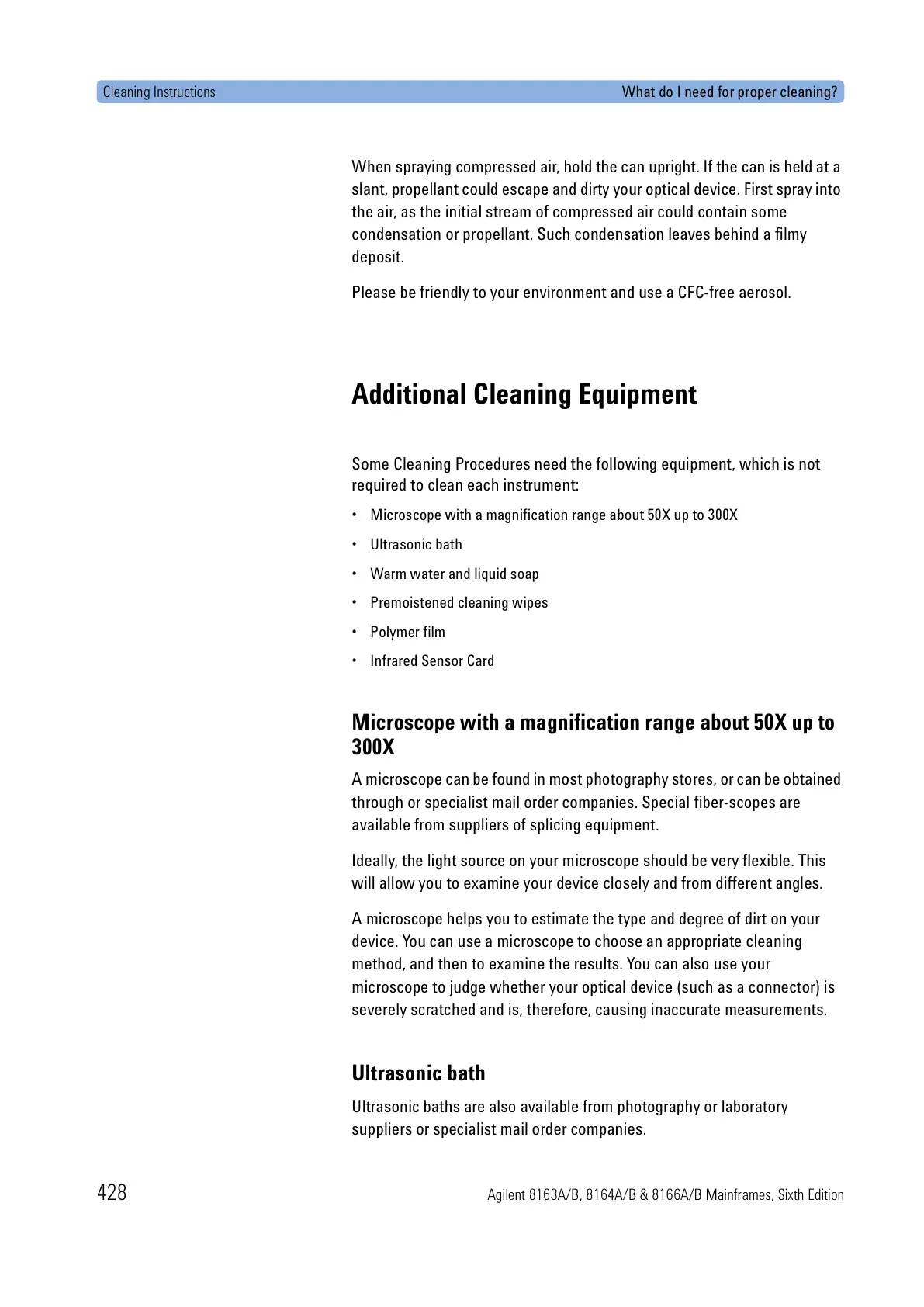Cleaning Instructions What do I need for proper cleaning?
428 Agilent 8163A/B, 8164A/B & 8166A/B Mainframes, Sixth Edition
When spraying compressed air, hold the can upright. If the can is held at a
slant, propellant could escape and dirty your optical device. First spray into
the air, as the initial stream of compressed air could contain some
condensation or propellant. Such condensation leaves behind a filmy
deposit.
Please be friendly to your environment and use a CFC-free aerosol.
Additional Cleaning Equipment
Some Cleaning Procedures need the following equipment, which is not
required to clean each instrument:
• Microscope with a magnification range about 50X up to 300X
• Ultrasonic bath
• Warm water and liquid soap
• Premoistened cleaning wipes
• Polymer film
• Infrared Sensor Card
Microscope with a magnification range about 50X up to
300X
A microscope can be found in most photography stores, or can be obtained
through or specialist mail order companies. Special fiber-scopes are
available from suppliers of splicing equipment.
Ideally, the light source on your microscope should be very flexible. This
will allow you to examine your device closely and from different angles.
A microscope helps you to estimate the type and degree of dirt on your
device. You can use a microscope to choose an appropriate cleaning
method, and then to examine the results. You can also use your
microscope to judge whether your optical device (such as a connector) is
severely scratched and is, therefore, causing inaccurate measurements.
Ultrasonic bath
Ultrasonic baths are also available from photography or laboratory
suppliers or specialist mail order companies.

